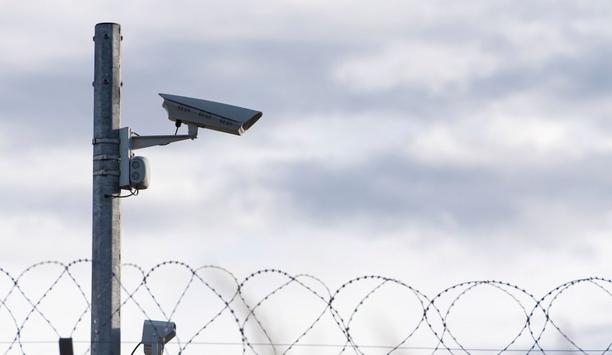 |
| No more confusion: high definition and megapixel resolution explained |
The growing popularity of IP-based video systems in the video surveillance market provides the ability to capture high-resolution images through megapixel video. The use of HDTV standards in the consumer video market is becoming more prevalent. The images produced by this new generation of surveillance cameras are often collectively referred to as high-definition (HD) or as megapixel images. Since the terms HD and megapixel both indicate an improved level of imaging performance compared to traditional analogue video, they are often mistaken to be the same. In this article Raul Calderon, Senior Vice President of Marketing of Arecont Vision lays bare the differences.
The goal of video surveillance should not be to replicate the broadcast (or consumer) HD resolution. As megapixel cameras offer resolutions higher than broadcast HD resolution, an explanation is in order.
Megapixel Versus High-Definition (HD) camera resolution
HD may be considered a subset of megapixel. HD is defined by specific resolutions at specific frame rates with a specific aspect ratio. Any camera with a resolution of more than a million pixels is by definition a megapixel camera. The lowest resolution in the megapixel range in the security market is around 1.3 megapixels, which provides 1280 x 1024-pixel resolution (or 1.3 million pixels), to resolutions as high as 10 megapixels (3,648 x 2,752 pixels). The range of megapixel surveillance cameras continues to expand to accommodate various application requirements. For example, Arecont Vision has expanded its range of megapixel cameras to include 1.3, 1080p, 2, 3, 5, 8 and 10 megapixel offerings, with 20 megapixel solutions in the offing.
Megapixel cameras offer resolutions higher than broadcast HD resolution |
Limitations of HD cameras resolution
HD refers to cameras with a standardized resolution of 720p or 1080p. The numbers 720 and 1080 refer to the horizontal resolution. Therefore, 720p HD camera resolution provides images that are 1280 x 720 pixels (921,600 pixels - not megapixel), and 1080p HD cameras provide 1920 x 1080-pixel resolution, or 2.1 megapixels. The HD video format also uses an aspect ratio of 16:9 (rather than 5:4 or 4:3), and the frame rate is standardized at 60, 50, 30 or 25 fps (depending on your TV).
IP video systems have momentum
According to a report by TechNavio Insights, IP video surveillance is poised for significant growth among end-users and large organizations. The benefits of software-driven functionality and the control, scalability and broad availability of video are often listed as factors contributing to this growth. However, among the biggest performance features of IP surveillance is the ability to provide a broad range of video resolutions. With H.264 compression and programmable resolutions and streaming, the new standard for video resolution can be defined simply as "whatever the application calls for". With IP/megapixel video, surveillance cameras assigned to cover critical areas can now capture any level of resolution up to 10 megapixel images (3,648 x 2,752 pixels - nearly five-times the resolution of a 1080p camera).
Using combinations of surveillance cameras with varying resolutions
With the ability of today's megapixel cameras to be adjusted to specific surveillance locations at different resolutions, cameras of varying resolutions can be combined on the same network. Core areas can then be viewed and recorded with higher resolution quality while secondary areas are viewed at less resolution with slower frame rates. Video analytics can also be applied to trigger megapixel streaming only when automatically activated. This approach conserves valuable bandwidth to optimize existing network pipelines as well as recorder storage space.
| |
| To create an optimum surveillance solution CCTV cameras of different resolutions can be used where appropriate |
The higher resolution provided by megapixel cameras also allows system designers to use fewer surveillance cameras to cover larger areas without losing detail, and with reduced infrastructure and cabling costs. In addition to reducing the initial installation costs of a system, these benefits translate directly into greater return-on-investment (ROI) and lower total cost of ownership.
Advantages of IP megapixel video
One of the advantages of IP megapixel video is versatility of resolution performance. Another factor contributing to the rapid rise of IP megapixel imaging is the ease of network system connectivity. Previously, every single surveillance camera had to have a "home run" coaxial cable running to the video recorder, which increased cabling costs exponentially. However, improved networking infrastructure enables connection of multiple cameras with fewer cables, and the use of Power-over-Ethernet (PoE) even allows power to be supplied to cameras on the same CAT-5 cables as video and control signals (rather than needing localized power or a distributed power supply). It's a very efficient and simple installation solution.
Additionally, the superior resolution provided by megapixel cameras enables highly detailed and accurate digital PTZ (pan-tilt-zoom) of live and recorded images. As a result, megapixel cameras virtually eliminate the need for mechanical PTZ cameras, which are often costly and feature mechanical parts prone to failure.
A contributing factor of the rapid rise of IP megapixel imaging is the ease of network connectivity |
Deploying IP megapixel systems
Many system integrators (and users) have a false perception that IP megapixel systems are too complicated to deploy. It's true these systems are not plug-and-play in the traditional sense, but partnerships between camera suppliers such as Arecont Vision and various DVR and VMS suppliers have paved the way for simplified integration of systems that meet the definition of plug-and-play on an IP network. Standards initiatives such as PSIA and ONVIF are making plug-and-play with little or no programming a possibility eventually. Additionally, there's a wide range of megapixel cameras available today with selectable resolution and frame rates that are ideal for general surveillance applications. These options provide system designers with a high degree of flexibility and confidence in their designs.
 |
| Adopting megapixel cameras has been made easier with the development of H.264 video compression |
The move to megapixel camera resolution
The developments related to H.264 video compression make bandwidth and storage requirements of megapixel images in IP-based systems comparable to those of standard resolution images. Megapixel cameras are also comparable in price to standard-resolution cameras. When you consider the ability to use fewer megapixel cameras to cover larger areas than analogue cameras, the result is a related savings on infrastructure and labor costs. These are all reasons why IMS Research predicts a significant increase in the installation of networked video surveillance systems, and that more than half the network cameras shipped by 2014 will be high-definition or megapixel resolution.
Whether you prefer megapixel cameras or its subset HD based on your specific needs, the wide range of high resolution cameras today provides a powerful palette of imaging tools for industry professionals. It's crystal clear that better systems are a direct result of the superior imaging possible with these high-resolution camera technologies.
 | Raul Calderon Senior Vice President of Marketing Arecont Vision |



















